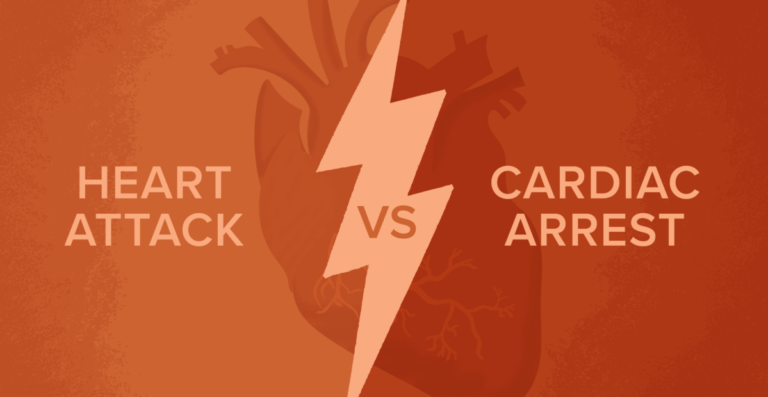Patients and even healthcare providers have a bad habit of confusing a heart attack with cardiac arrest, two serious, if not fatal, heart conditions. But these two terms describe different medical conditions and each one requires a different approach to care. Heart disease and related heart conditions are the leading cause of death for both men and women in the U.S., so everyone needs to understand the difference between heart attacks and cardiac arrest. Learn more about how to distinguish between the two.
What Is a Heart Attack?
A heart attack is when a person suffers from a blocked artery that prevents blood from circulating throughout the body. The heart will quickly start to deteriorate if normal blood flow doesn’t resume as quickly as possible. Heart attacks refer to a circulation problem, which tends to be associated with high cholesterol and other unhealthy lifestyle habits.
Signs of a Heart Attack
In the moment, the person may suffer from intense pain in their chest or upper body. They may experience shortness of breath, cold sweats, or even nausea and vomiting. These symptoms usually begin several hours or days before the heart attack begins. While the heart continues pumping blood, the person will need immediate medical attention to prevent long-term damage to their heart.
How to Respond
Call 9-1-1 as soon as possible. EMS staff will begin reviving the person’s heart as soon as they arrive. Treatment may involve medication, surgery, or an angioplasty balloon to break up the clog.
What Is Cardiac Arrest?
Cardiac arrest is when a person’s heart stops beating suddenly, which requires immediate medical attention. It’s caused by an electrical malfunction in the heart that prevents it from pumping blood to vital organs in the body, including the brain and lungs. This refers to an electrical issue with the heart, not a circulation problem.
Signs of Cardiac Arrest
When this happens, the person will become unresponsive within just a few seconds. They will have trouble breathing or may be unable to breathe at all, some gasping for air. Their face may become red or purple due to the lack of oxygen. The person will die if they don’t receive treatment within a few minutes.
How to Respond
You have three proprieties when treating someone experiencing cardiac arrest. You’ll need to call 9-1-1, perform CPR, and find an Automated External Defibrillator (AED) as soon as possible. The AED is a portable device that shocks the heart to restore a normal rhythm. If you’re treating the patient by yourself, call 9-1-1, perform CPR and try to find an AED. If you have another person helping you, start CPR right away and have the other person make the call and find the AED.
The more you know about the differences between cardiac arrest and a heart attack, the better prepared you’ll be to respond in the moment and save lives. Watch out for these specific symptoms, so you can respond accordingly in the moment.
Sources:
